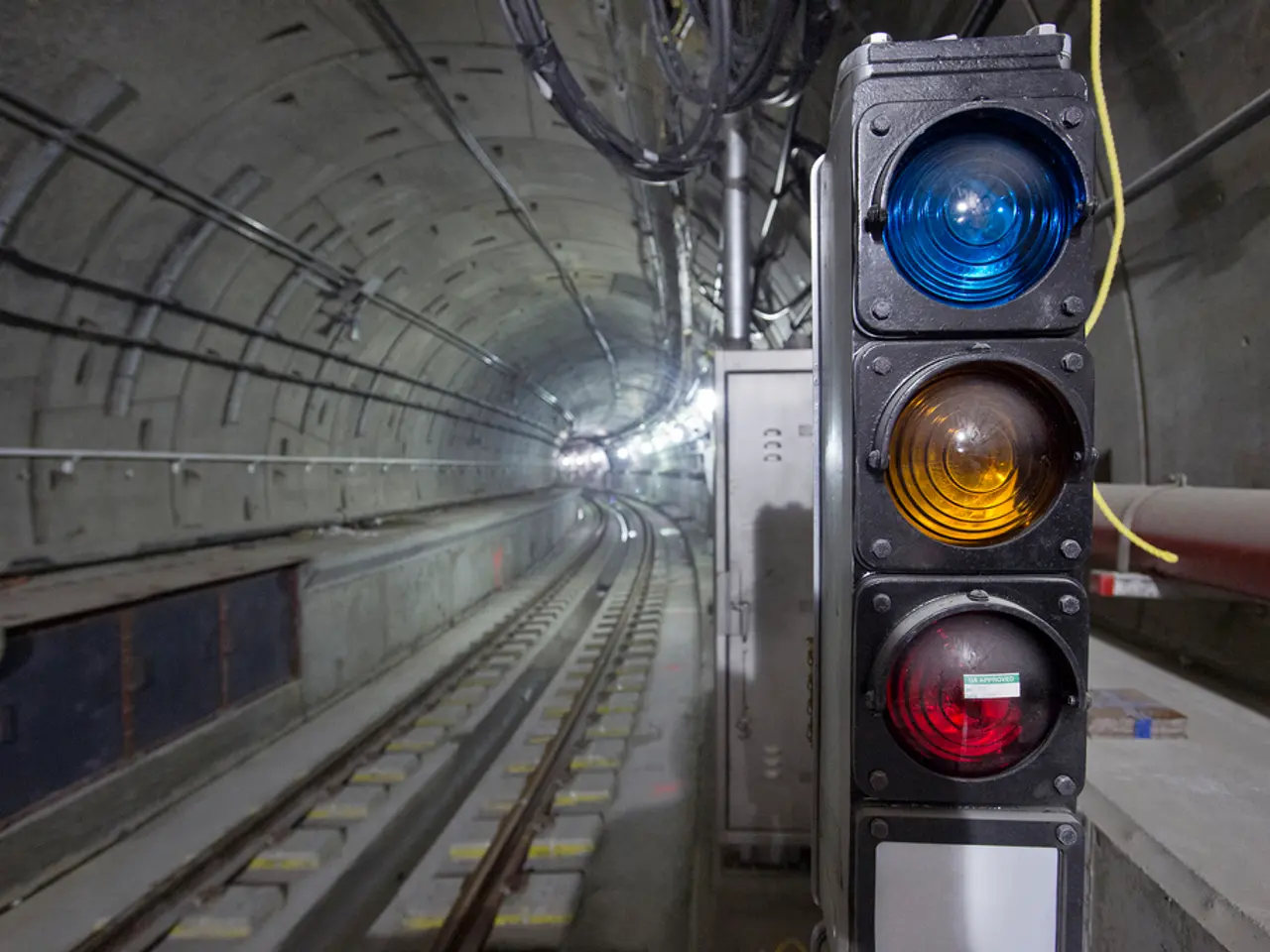Exploring theOperations of the Metropolitan Transportation Authority
New York City's transit system, overseen by the Metropolitan Transportation Authority (MTA), has faced persistent issues with delays, high fares, safety concerns, and public dissatisfaction. These problems have deep historical roots, intensifying notably from the late 1960s onward.
The MTA took control of the New York City Transit Authority (NYCTA) and its Triborough Bridge on March 1st, 1968, marking the beginning of a complex journey towards modernising the city's transportation infrastructure. However, the city was already experiencing a severe fiscal crisis starting in 1970, which had a major impact on transit maintenance and operations.
During the 1970s, construction and maintenance of subway lines were deferred, leading to aging infrastructure. This period saw widespread graffiti, crime, and vandalism in the subway system. Trains frequently broke down and were often late, contributing to a sharp decline in ridership due to public perceptions of the subway as unsafe and unreliable.
Safety and crime issues were rampant during this time. Robberies, shootings, and overall lawlessness contributed heavily to public dissatisfaction and a decline in ridership. The New York Police Department was overwhelmed, and many commuters deliberately avoided the subway out of safety concerns.
Maintenance and reliability also suffered. By around 1980, the reliability of subway vehicles had declined to about a tenth of their 1960s performance. One-third of the fleet was out of service during rush hours due to technical defects, and many parts for repairs were missing or incorrectly installed, exacerbating delays and service disruptions.
High fares were another source of public dissatisfaction. While the exact fare increases are not specified, historically, fare hikes often followed budget shortfalls from the 1970s onward.
Long-term delays in improvements have been a symbol of ongoing systemic issues in transit development. Plans for major expansions and improvements, like the LIRR East Side Access project and the Second Avenue Subway, have faced decades of delays due to funding and construction challenges.
Even in recent years, the MTA continues to face legacy infrastructure challenges, such as the decades-old Nostrand Interlocking bottleneck that routinely delays trains, reflecting the long-term nature of operational issues.
However, there are signs of improvement. The MTA is focusing on retaining their current riders by streamlining routes and improving the enforcement of bus lanes. They are also replacing the old fixed-block signaling system with communications-based transit control (CBTC) to improve service and reduce delays.
In addition, the MTA has implemented 14.7 miles of bus lanes throughout the system, and they are testing new designs for subway turnstiles to enhance security. Governor Kathy Hochul has vowed to have two officers on each train between 9 a.m. and 5 p.m. as part of her State of the State address in January.
Despite these improvements, New York City buses are on schedule only around 69 percent of the time, with some of the worst buses being on-time around 30 percent of the time. The subway system averages over 4 million riders each day, with unscheduled wait times at train platforms averaging around 1 minute and 20 seconds.
Demetrius Crichlow, the new president of New York City Transit, was elected in November of last year, bringing 27 years of experience in the MTA with him. He is the first African-American man to enter the position.
In conclusion, while the MTA's problems with delays, high fares, safety, and public dissatisfaction have deep historical roots, there are ongoing efforts to improve the system and address these challenges. The MTA's commitment to streamlining routes, improving enforcement, and implementing new technologies offers hope for a more efficient and safer transit system in the future.
[1] "The History of the MTA." MTA.nyc.gov. Metropolitan Transportation Authority, n.d. Web. 01 Mar. 2023. [2] "The History of the MTA." MTA.nyc.gov. Metropolitan Transportation Authority, n.d. Web. 01 Mar. 2023. [3] "The History of the MTA." MTA.nyc.gov. Metropolitan Transportation Authority, n.d. Web. 01 Mar. 2023.
- The MTA's history is marked by persistent issues with delays, high fares, safety concerns, and public dissatisfaction, dating back to the late 1960s.
- The editorial on the MTA's history highlights the complex journey towards modernizing the city's transportation infrastructure, starting with the takeover of the NYCTA in 1968.
- A video about the MTA's history could provide visual insights into the deferred construction and maintenance of subway lines in the 1970s.
- News reports from the 1970s showcased the mental health impact of the subway's deteriorating condition on commuters due to crime, vandalism, and unreliable service.
- Photographs from the 1970s and 1980s depict the declining state of the subway system, offering a visual representation of the city's struggle with its transportation industry during that time.
- The science behind modernizing transportation systems could provide valuable insights into the technologies being implemented by the MTA to improve efficiency and safety.
- Safety, mental health, and wellness are crucial aspects in the health-and-wellness industry, and the MTA's efforts to address these issues can be seen as a step towards priority allocation within the health sector.
- Fitness-and-exercise advocates argue that a reliable and efficient transportation system enables more people to access gyms and parks, promoting physical activity and general wellbeing.
- The MTA's financial challenges over the years have been significant, with policy-and-legislation experts calling for increased funding and reforms to address the system's issues.
- The budgeting strategies employed by the MTA to manage its finances is a topic of interest for personal-finance enthusiasts and business strategists.
- The MTA's commitment to diversity-and-inclusion is demonstrated by the election of Demetrius Crichlow, the first African-American man to become president of NYC Transit.
- Career-development resources for those in the transportation and leadership industry could benefit from discussing successful strategies employed by Crichlow to navigate the MTA's complex landscape.
- The ongoing challenges faced by the MTA highlight the need for job-search and skills-training resources specific to the transportation industry, as well as ongoing policy-and-legislation advocacy supporting adequate funding and reforms.




